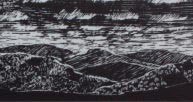As the Northern Forest Lands Council publishes our recommendations and begins promoting them this fall, it gives me occasion to reflect on their meaning for us and for the forest.
The council was born amidst controversy. It was understandably threatening to some that people of a four-state, 26 million acre forest region stretching from Lake Ontario to Aroostook County would discuss the future of the area and thus, the future of the people within it.
Unfortunately, some individuals and groups, including the John Birch Society, tried to exploit those fears. At a U.S. Senate hearing at Lyndon State College in 1992, I was ashamed at the obscenities and crude behavior of the demonstrators, noting that some had been imported from outside our region. They did not win the day, nor in the longer run, the issues, because our own people — Adirondackers, Northeast Kingdomers, New Hampshirites and Mainers — came together, not negatively but positively, around their love for this North Country.
Great thanks are due to Vermont Senator Patrick Leahy and retired New Hampshire Senator Warren Rudman who first came together and fostered the NFLC. Senator James Jeffords and U.S. Representative Bernie Sanders have shown subsequent support for our efforts, as did the late Governor Richard Snelling (who first appointed me as a Vermont member) and Governor Howard Dean, who has been steadfast in his encouragement.
The NFLC's only "product" is the package of recommendations which are just now being presented to the four governors, the Congress and the public. But maybe our most important product — even beyond the recommendations— was the process of coming together and, as our tide says, "Finding Common Ground."
A sense of awareness has spread, east to west, west to east, across this forested region of the otherwise urbanized and sub-urbanized Northeast. Throughout this area we heard clearly that people are concerned for their forest, concerned about the way it is taxed, used, harvested, tended, and protected for the future in a balanced network of private lands and public ownerships. Although the contrasts with the Pacific Northwest are great, especially in terms of timber types and land ownership patterns, we have said that if something like the NFLC had been in existence there twenty years ago, the bitterness, the polarization, the entire "spotted owl syndrome" need never have happened.
Continuing to reflect, I ponder about what I personally have learned during my three-year NFLC tenure. Lots, I'm sure, but two major themes stand out. First, 17 of us on the council, around the table, over many months, reached agreement. We area very diverse group, men and women representing landowners, environmental groups, state conservation agencies and local communities. While our discussions would sometimes last from 6:30 in the morning to well after midnight and we'd sometimes despair that we'd ever get there, we came together at the end. And while 17 people is a fraction of the one million who live in this forest region, I hope that in opposition to the loud cynics and fear mongers who showed up at the beginning, we will stand as a strong sign that harmony is achievable without sacrificing principle.
Second, the collapse of the North Atlantic fishery occurred during the council's life. This is an unbelievable event to those of us born and raised in coastal New England, to someone like me who married into a family earning its living around saltwater. It's a major environmental disaster in its own right, but it occurs to me also that we have witnessed now in our lifetimes and before our eyes the destruction of the major ecosystem adjoining us to the east. I do not mean to say that the forest is in danger of such immediate major disaster, or to press the forest-fishery analogy too far, but it does give me pause and brings on the sober reflection that it is good that the NFLC was formed "ahead of the curve," even if just barely. If something similar had been created for the Atlantic fishery, the collapse of fishing communities, family and worker dislocation, human misery, and the need for federal disaster money all might have been avoided.
Now, for me and the forest, it is time to move on the next phase. Several people have asked me, a council member, "Do you think anything will come of the recommendations that you just handed to the governors and the Congress?"
Much good could come, for I think, proudly — and I'll admit pride—that we've done a good job on the NFLC. But the real answer still lies ahead and has everything to do with all of us who care (and we found that lots and lots of us do care) for that's what ultimately beat the snarling cynicism at the Lyndon hearing in 1992. Let's move on. We've got our road map now, and there's lots to be done.


